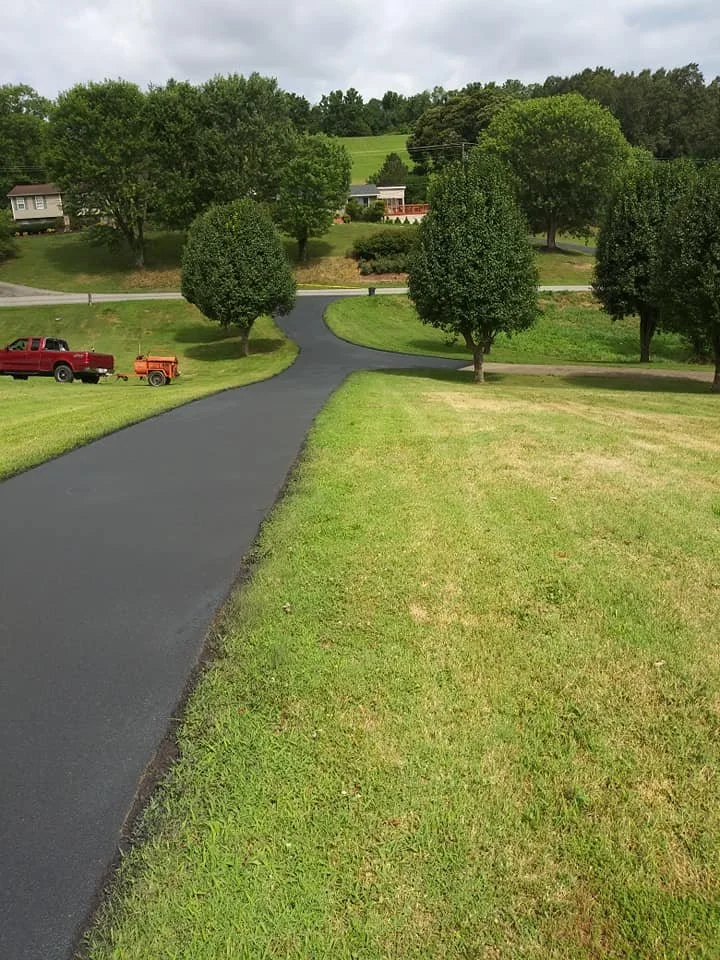
Unleash the Power of Superior Construction
Exclusive Services
Expert craftsmanship and service
Achieve your project goals with unparalleled speed and efficiency. Our expert team delivers top-tier construction services designed for high performance and durability.
Free Estimates and Expert Advice
Experience unparalleled customer service with rapid response times. Our dedicated team ensures your queries are handled with precision and urgency, any time you reach out.
Insured for your protection
Fully Licensed and Insured with over 30 years experience. We strive to provide professional quality services.
SERVICES WE OFFER
-
Get expert Grading and Excavation services and advice by our knowledgeable professionals
-
Clear unwanted areas of overgrowth or grade and excavate into useable areas
-
Driveways, Parking or Building Pads Installation
-
Repair, Protect, and Seal your driveway or parking lot with premium products
-
We provide lot cleaning, sealing, striping and more
-
See our Facebook for low cost alternatives for driveways like our compacted Pug Mix Driveways
-
For a hard gravel surface that doesn’t wash out, contact our experts for more information
-
Removal of unwanted buildings or structures and debris
-
Whether you have issues with drainage in your yard, driveway or basement, get advice from our seasoned professionals on how to fix problems with water overflow
dishman
knowledge
Center
-
Consider it a new investment to your property or one that solves the problem of a muddy, soppy, messy driveway. Pug Mix can ease a big headache especially in rainy spring weather. Either in preparation for paving as a base or as a low cost alternative, Pug Mix Driveways have gotten the attention of many residents in our area.
Pug Mix or Pug Mill, is a special mix of Crusher Run Gravel, sand,fine lime powder dust and water. This gravel is typically used for road building, concrete slabs, and sidewalks but can also be used for your driveway, parking area or walking path. The product is installed and compacted with a vibratory roller and left to dry into a solid surface perfect for getting rid of unwanted mud and creating a driving surface that leads to less mess and problems. In some cases the area may need a sub-base gravel, often in softer areas that need more support.
In a typical project, the area is graded and sprayed for unwanted vegetation, bases are installed if needed to ensure a solid foundation and then the Pug Mix is spread evenly and leveled before it is compacted. The dried and finished result is a hardened and bonded gravel driveway.
Pricing depends on the project size, area of project, landscape specifications and products used. Dishman Land & Drive always provides free estimates so hop on over to our Facebook page where you can find lots of pictures and information on this and many of our other products and services. You can also message us there to ask questions, or request an appointment for your free estimate.
-
About Your Asphalt:
Asphalt is a great looking option for your driving surfaces but will require some care to avoid damage
Your new driveway will take six to twelve months to completely cure and will harden more during this time. During hot summer months the asphalt may become pliable again. Please use the tips provided here to keep your driveway in great condition now and always.
Feel free to call with any additional questions
Please do not drive on your new asphalt for at least twenty-four hours.
Never turn the steering wheel on your asphalt when your vehicle is stationary and avoid making sharp or tight turns.
Kickstands, barbeque grills, or other sharp heavy objects may leave indents.
Use plywood or similar material to support heavy objects like boats or car jacks to distribute weight evenly.
Use a protective oil based sealant every two to four years.
Use care with oils or fuels which can lead to staining and can be corrosive to the asphalt.
Trim or use herbicides on creeping grasses to avoid cracks.
Fill any cracks with hot rubberized crack filler to prevent further damage.
-
Asphalt sealcoating is a maintenance process used to protect and extend the life of asphalt surfaces, such as driveways, parking lots, and roads.
What is Asphalt Sealcoating?
Sealcoating involves applying a protective liquid coating (typically a coal tar emulsion, asphalt emulsion, or acrylic-based sealant) over an asphalt surface. This creates a barrier that shields the asphalt from damage caused by weather, UV rays, water, oil, gasoline, and traffic wear. It also enhances the appearance by giving the surface a smooth, dark finish.
Purpose and Benefits
Protection from Elements:
Shields asphalt from UV rays, which cause oxidation and brittleness.
Prevents water penetration, reducing freeze-thaw damage and cracking.
Protects against chemical spills (e.g., oil, gasoline) that degrade asphalt.
2. Extended Lifespan:
Regular sealcoating can double the life of an asphalt pavement, delaying costly repairs or replacement.
Typically recommended every 2–5 years, depending on traffic and climate.
3. Improved Aesthetics:
Restores a uniform, black appearance, enhancing curb appeal.
Covers minor imperfections like small cracks and faded surfaces Cost-Effective Maintenance:
Sealcoating is significantly cheaper than repaving or major repairs.
Prevents small issues from escalating into larger, more expensive problems
4. Traction and Safety:
Some sealcoats include additives (e.g., sand or silica) to improve skid resistance.
Smooths out rough patches, improving drivability.
Application
Typically requires 2–3 thin coats for optimal protection (thick coats may crack or peel).
Additives like sand or polymers may be mixed in for texture or durability.
Edges are often hand-brushed for precision.
Curing and Drying:
Curing time varies (24–48 hours for coal tar/asphalt emulsions, less for fast-dry sealants).
Temperature and humidity affect drying; ideal conditions are above 50°F with low humidity.
Traffic should be blocked off during curing to prevent tracking or damage.
Post-Application:
Inspect for even coverage and address any missed spots.
Regular maintenance (sweeping, spot repairs) extends sealcoat life
When to Sealcoat
New Asphalt: Wait 6–12 months to allow the asphalt to cure and oils to dissipate.
Existing Asphalt: Sealcoat every 2–5 years, depending on wear, traffic, and climate.
Signs It’s Needed: Fading color, small cracks, raveling (loose gravel), or water pooling.
Best Time: Late spring to early fall, when temperatures are consistently above 50°F and rain is unlikely.
Factors Affecting Sealcoating
Climate:
Harsh winters or intense UV exposure accelerate asphalt wear, requiring more frequent sealing.
Wet climates increase water damage risk, necessitating timely sealcoating.
2.Traffic Volume:
High-traffic areas (e.g., commercial parking lots) need more durable sealants and frequent applications.
Residential driveways may last longer with less frequent sealing.
3.Surface Condition:
Severely damaged asphalt (e.g., large cracks, potholes, or alligator cracking) requires repairs before sealcoating.
Sealcoating over poor surfaces is ineffective and wastes resources.
4. Quality of Materials and Application:
High-quality sealants (e.g., acrylic or polymer-enhanced) last longer but cost more.
Professional application ensures even coverage and proper curing.
Limitations and Considerations
Not a Repair Solution: Sealcoating protects but doesn’t fix structural issues like large cracks or base failures.
-
Tar and chip, also known as chip seal or bituminous surface treatment, is a road surfacing method that combines a layer of asphalt (tar or bitumen) with a layer of fine aggregate (chips or gravel). The process involves spraying a thin layer of hot liquid asphalt onto a prepared road surface, followed by spreading a layer of small, uniformly sized stones or gravel. The surface is then rolled to embed the chips into the asphalt, creating a durable, skid-resistant pavement.Key Features:
Cost-Effective: Cheaper than traditional asphalt or concrete paving, making it popular for rural roads, driveways, and low-traffic areas.
Durability: Provides a weather-resistant surface that can last 7-10 years with proper maintenance.
Traction: The rough texture improves vehicle grip, especially in wet conditions.
Aesthetic: Often used for its rustic, natural look, especially in residential driveways.
Maintenance: Requires periodic resealing and may need loose chips swept or replaced over time.
Common Uses:
Rural and secondary roads
Driveways and parking lots
Bike paths and walkways
-
Common water drainage issues in residential yards and driveways include:Poor Grading/Slope: Yards or driveways that slope toward the house or lack proper grading cause water to pool near foundations, leading to water damage or flooding. Ideally, surfaces should slope away from structures at 1-2% (1/4 inch per foot).
Clogged Drains/Gutters: Debris like leaves or dirt can block drainage systems, causing water to overflow and pool in yards or driveways. Regular cleaning of gutters, catch basins, or French drains prevents this.
Compacted Soil: Heavy foot traffic or clay-heavy soil reduces water absorption, leading to puddling or runoff. Aeration or adding organic matter can improve soil drainage.
Improperly Designed Driveways: Driveways without adequate slope or drainage channels (like swales or trench drains) allow water to collect, causing erosion or damage to the surface (e.g., cracking in asphalt or concrete).
Erosion: Runoff from heavy rain can wash away soil, mulch, or gravel, especially on sloped yards, creating ruts or exposing roots. Retaining walls, riprap, or ground cover plants can stabilize soil.
Inadequate Drainage Systems: Missing or undersized drainage solutions (e.g., French drains, dry wells, or catch basins) fail to handle water volume, leading to pooling or flooding. Professional assessment can determine proper sizing.
Low Spots/Pooling: Depressions in yards or driveways collect water, creating muddy areas or damaging surfaces. Regrading or installing drains can redirect water.
Hardscape Runoff: Impervious surfaces like concrete driveways increase runoff, overwhelming nearby soil or drainage systems. Permeable pavers or gravel can reduce runoff.
Tree Roots: Roots near drainage systems or driveways can block pipes or lift surfaces, disrupting water flow. Root barriers or regular maintenance can mitigate this.
Seasonal Issues: Heavy rain, snowmelt, or frozen ground can exacerbate drainage problems, especially if systems are already strained. Seasonal inspections ensure readiness.
Solutions often involve regrading, installing drainage systems (e.g., French drains, channel drains), using permeable materials, or adding landscaping features like rain gardens. Local climate and soil type influence the best approach—consulting a professional for site-specific analysis is recommended for persistent issues. If you’d like, I can search for recent discussions or solutions on this topic or analyze any specific details you provide (e.g., yard layout or photos).
Schedule today
Book your appointment with us today for unrivaled efficiency in construction and maintenance solutions, ensuring your projects are completed on time and within budget. Experience exceptional service that gets the job done right the first time, every time.
Dishman land & Drive
We redefine excellence in construction and maintenance with unmatched speed and precision. Our team delivers robust, reliable solutions that drive projects forward with unwavering confidence. Family Values, Expert Knowledge.
Follow us on social
Contact Us
Interested in working together? Fill out some info and we will be in touch shortly. We can’t wait to hear from you!







